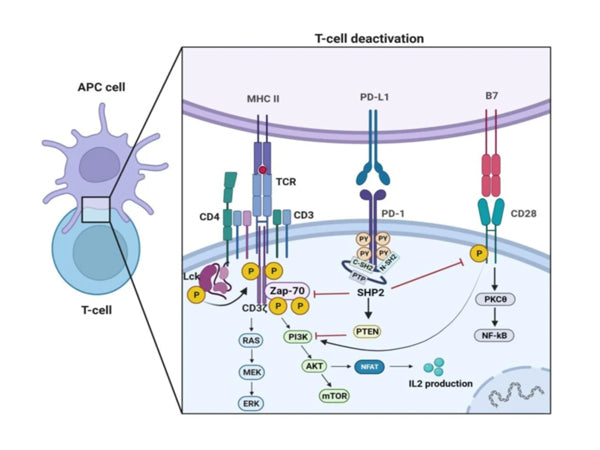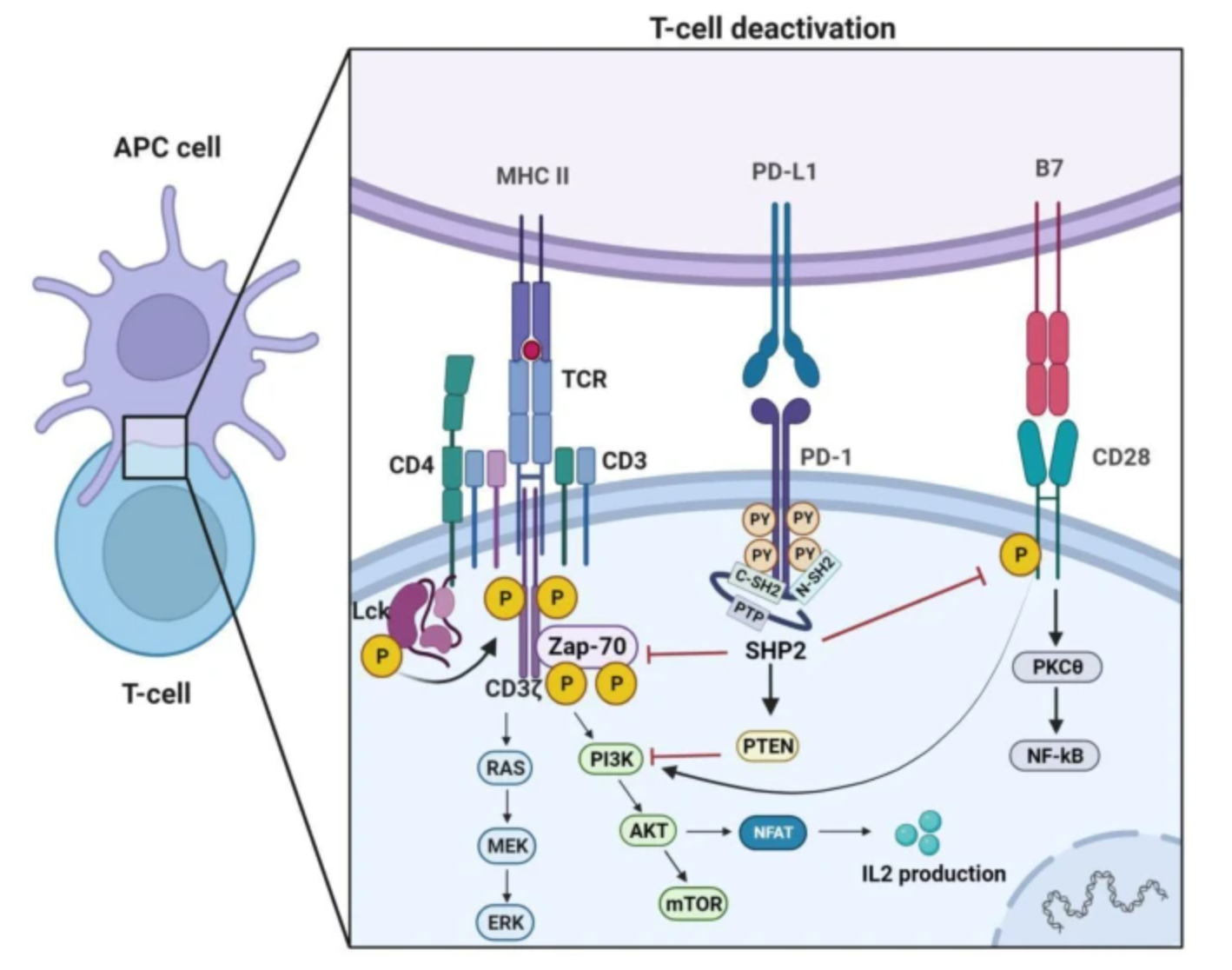STARTER's Featured Product Recommendation: PD-1 Functional Antibodies.

PD-1 is a 50-55 kDa cell surface receptor encoded by the Pdcd1 gene, which belongs to the CD28 family of the Ig superfamily. PD-1 is transiently expressed on CD4 and CD8 thymocytes, as well as activated T and B lymphocytes and myeloid cells. Following successful antigen elimination, PD-1 expression decreases. Additionally, Pdcd1 mRNA is expressed in developing B lymphocytes at the pre-B cell stage.
The structure of PD-1 includes an ITIM (immunoreceptor tyrosine-based inhibitory motif), indicating that PD-1 negatively regulates TCR signaling. PD-1 signals by binding to its two ligands, PD-L1 and PD-L2, both members of the B7 family. Upon ligand binding, PD-1 signaling inhibits T cell activation, leading to reduced proliferation, cytokine production, and T cell death. Furthermore, PD-1 is known to play a critical role in peripheral tolerance and the prevention of autoimmune diseases in mice, as PD-1 knockout animals exhibit dilated cardiomyopathy, splenomegaly, and loss of peripheral tolerance.
Induced PD-L1 expression is common in many tumors, including squamous cell carcinoma, colon adenocarcinoma, and breast cancer. Overexpression of PD-L1 increases tumor cell resistance to CD8 T cell-mediated lysis. In mouse melanoma models, therapeutic antibodies blocking the interaction between PD-L1 and its receptor PD-1 can temporarily suppress tumor growth. For these reasons, anti-PD-1-mediated immunotherapy is currently being explored as a cancer treatment.

The Immune Regulation Mechanism of the PD-1/PD-L1 Axis
Featured Product Introduction
|
Product |
Invivo anti-mouse PD-1 Recombinant mAb (D265A) |
|
Product Code |
S0B0594 |
|
Isotype |
Mouse lgG1 D265A,k |
|
Recommended Isotype Control |
Invivo mouse lgG1 isotype control(D265A) |
|
Buffer System |
PBS, pH 7.0, without stabilizers or preservatives |
|
Application |
In vivo blockade of PD-1/PD-L1 signaling |
|
Accession |
Q02242 |
|
Cellular Localization |
Cell membrane |
|
Endotoxin |
<1EU/mg |
|
Concentration |
Lot specific* (generally 5 to 20 mg/ml)* |
|
Purification |
Protein G |
|
Storage |
2 to 8 °C for 2 weeks under sterile conditions; -20 °C for 3 months under sterile conditions; -80 °C for 24 months under sterile conditions. |
Data Presentation

Anti-tumor efficacy of S0B0594 in B16-OVA tumor-bearing mice




